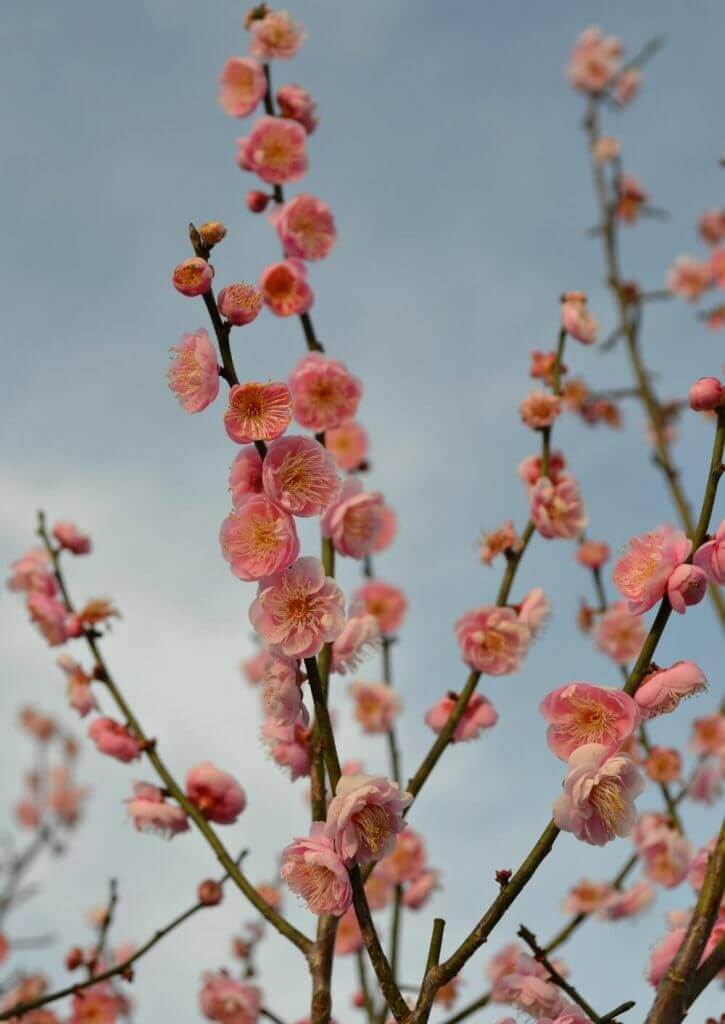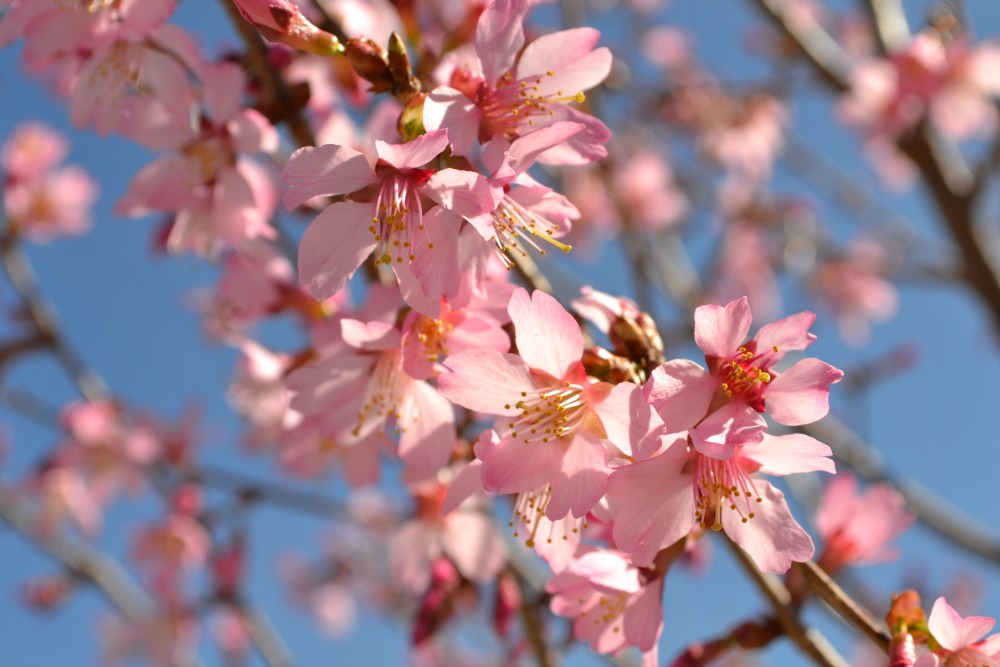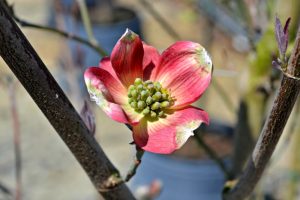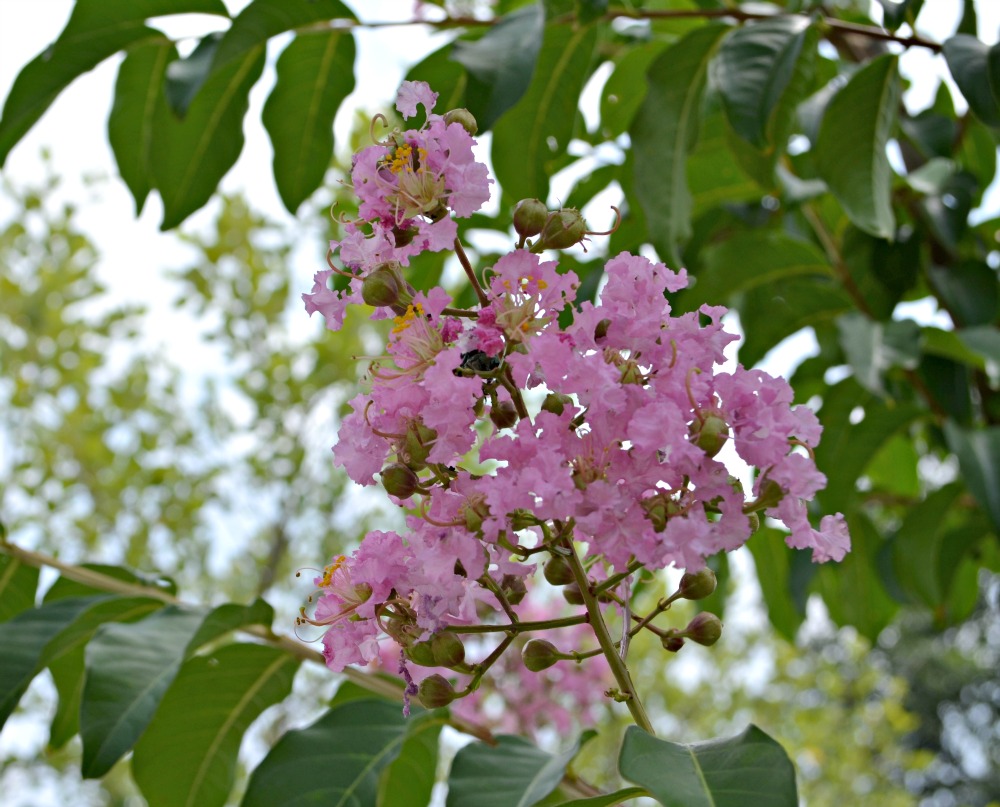6 Trees that Bloom Pink in the Spring
Spring is a great time for a reset, and a tree with pink flowers is perfect for the job. At Fairview Garden Center, we often get questions about the best pink flowering trees in North Carolina. To help, we’ve made a list of 6 varieties—with unique sizes, heights and features—to help you find your ideal fit.
1. Japanese Flowering Apricots (Prunus mume)

Blooming Time: Early spring
Height/Spread: 10-20′ tall, 10-15′ wide
Growing Zones: 6-9
Sun: Full sun to part shade
One of the first trees with pink blooms in spring, the Japanese flowering apricot can start as early as mid-February—even in cold temperatures. Its double-rose pink flowers have long stamens and create a spicy fragrance, while its small, inedible fruits are great for ornamental flair. The Peggy Clark variety is particularly popular for its vibrancy and upright growth.
2. Flowering Cherry Trees (Cerasus serrulata)

Blooming Time: Early to mid-spring
Height/Spread: 12-30′ tall, 15-20′ wide
Growing Zones: 5-8
Sun: Full sun
Flowering cherry trees are loved for their variety, with different types like Okame, Yoshino, Kwanzan and Weeping Cherry each offering unique shades of pink. Okame is typically the first to bloom, producing deep rose-colored clusters, while the others follow at different times. Best of all, each only requires minimal care to deliver spectacular color throughout the season.
3. Saucer Magnolias (Magnolia X soulangeana)

Blooming Time: Early to mid-spring (before leaves appear)
Height/Spread: 15′ tall, 8′ wide
Growing Zones: 4-9
Sun: Full sun
The saucer magnolia, a Japanese relative of the southern magnolia, is great for smaller landscapes. Its big, tulip-shaped purple and pink flowers appear before its leaves. Plus, thanks to its size, it can offer a burst of color without overwhelming a space.
4. Redbuds (Cercis canadensis)

Blooming Time: Early to mid-spring (before leaves appear)
Height/Spread: 15-25′ tall, 15′ wide
Growing Zones: 4-9
Sun: Part sun
Redbuds, native to the Piedmont region, come in various shapes and pink shades. Adaptable and drought-tolerant, they work great in woodland or naturalized settings. With their distinctive canopy spreads, redbuds are also great for shrub borders or specimen plantings.
5. Pink Flowering Dogwoods (Cornus florida)

Blooming Time: Mid-to-late spring
Height/Spread: 15-30′ tall, 15-20′ wide
Growing Zones: 5-9
Sun: Full sun if planted deeply; light shade if planted shallower
Dogwood is a beloved North Carolina native and our state’s official flower, offering true year-round appeal. In addition to its pink spring flowers, it offers lush summer leaves, brilliant red leaves in the fall and ornamental red berries that attract birds. Low-maintenance and adaptable, the dogwood grows best in the filtered light beneath larger hardwood or pine trees.
6. Crepe Myrtle Trees (Lagerstroemia indica)

Blooming Time: Wide-ranging (lasting into summer)
Height/Spread: 6’- 25’ tall & 8’-20’ wide
Growing Zone: 7-9
Sun: Full sun
Crepe myrtles are a versatile, low-maintenance choice for vibrant pink, red, white, or purple flowers. Plus, with their eye-catching bark and arching branches, they look great even when not in bloom. Once established, crepe myrtles are drought-tolerant and pest-resistant, making them an excellent option for all types of planting areas.
Find Pink Blooming Spring Tree Types With Fairview Garden Center
Imagine how much even one tree with pink flowers can transform your yard. At Fairview Garden Center, we’ll help you find the perfect match and provide expert gardening advice along the way. Call us at 919-851-6821 or stop by in person to explore our wide selection today!




